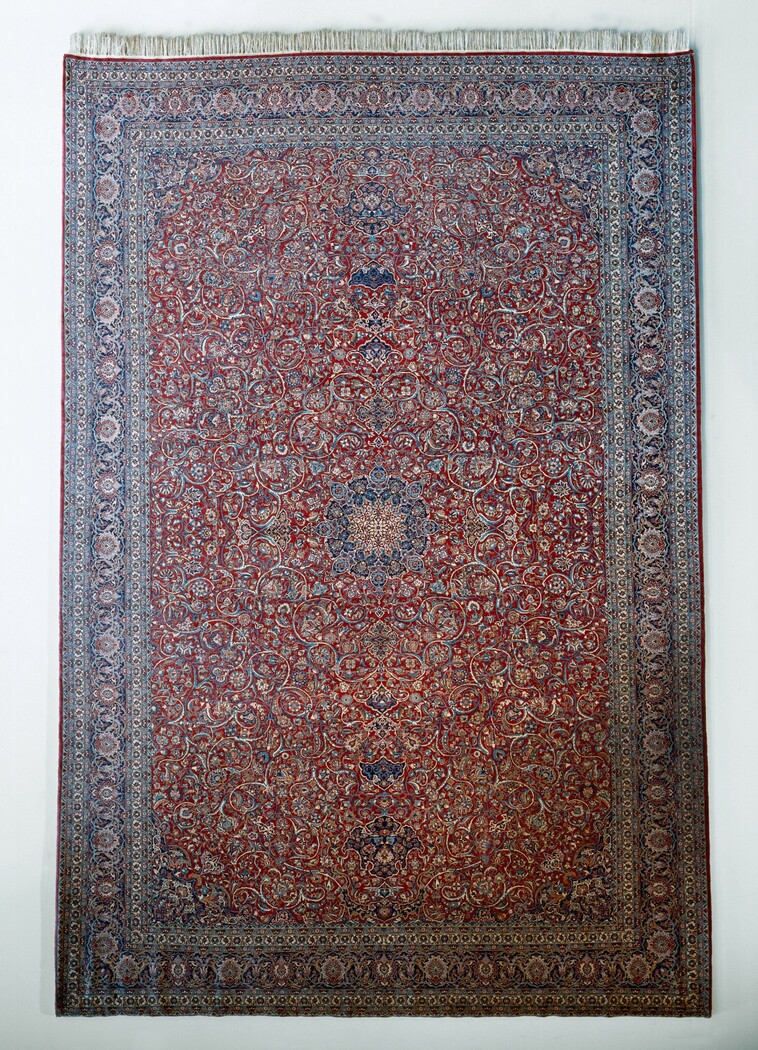
Isfahan Persian Rug
This Persian rug was originally designed by an anonymous craftsman of Isfahan, an Iranian city known for its weaving, and was woven in Nain, a town noted for its carpet industry, by five professional workers, who were supervised by one expert. The rug took approximately four years to complete, and in every centimeter of carpet, there are 95 to 100 knots lengthwise and the same amount in width.
The design of the carpet was taken from a Safavid carpet pattern and is known as the pattern of Shah Abbas. The Safavid dynasty was one of the most significant ruling dynasties of Iran from 1501 to 1736, and Shah Abbas was considered the strongest ruler of the Safavid dynasty. During this dynasty Iran witnessed an outstanding period in the history of Persian fine arts.
The carpet is in shades of red and blue, the traditional small figure designs surround a central and circular medallion. The quality of this carpet can be understood by observing the backside and its fringes. The threads of warp at even intervals and the high number of fine thread count demonstrate the quality handiwork of a skilled craftsperson.
The rug was gifted to the United Nations on the 31st of December, 1952.

